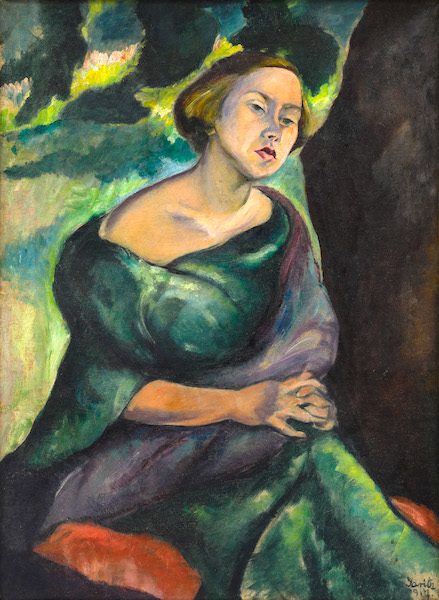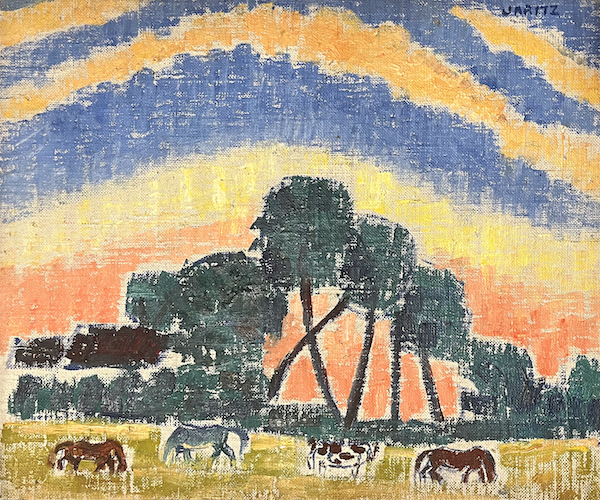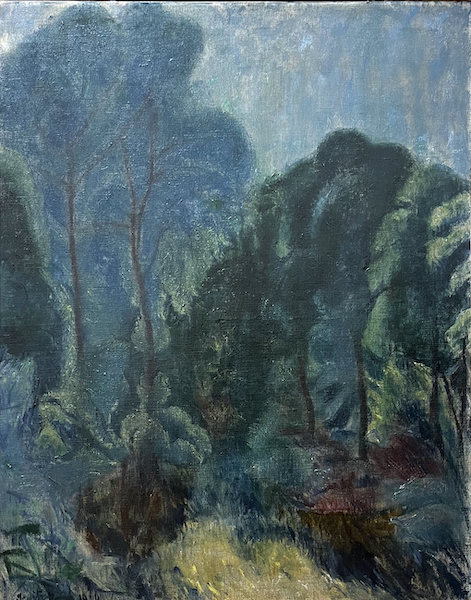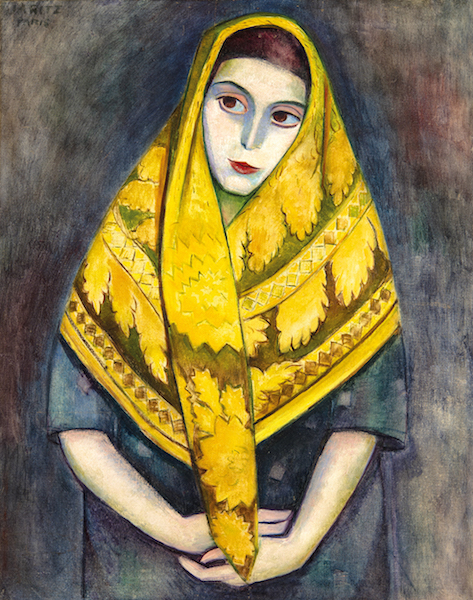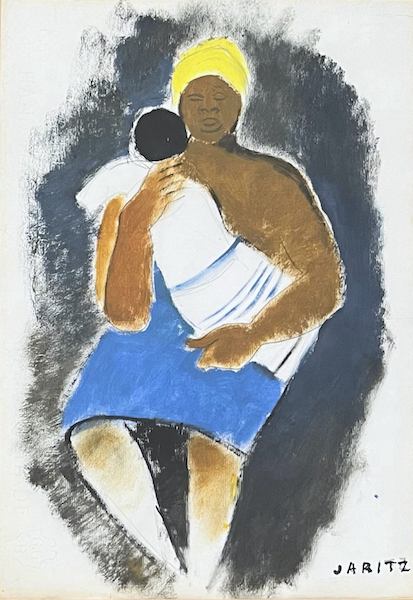Biography
Between 1912 and 1922 she studied at the Hungarian Academy of Fine Arts, her teachers were Lajos Deák-Ébner, Oszkár Glatz and János Vaszary. In 1914, she was a student of Béla Iványi-Grünwald at the artist colony in Kecskemét, during the First World War she attended the private school in Csáky Street, and in 1919 she continued her education at the master school of Róbert Berény. In 1922, her first two exhibitions of outstanding importance in terms of her career were held. As a great satisfaction, in February, here pictures were exhibited in the Helikon Gallery alongside Csók, Vaszary and Rippl-Rónai, and in October, her solo collection exhibition opened in the National Salon.
From 1924 to 1930, she was a dance teacher in Paris, where she regularly exhibited her works in the Salon of the Independents. During the dance lessons, she met her English patron, who we know was a well-to-do, free-spirited writer and somewhat skilled at painting. Her patron later donated the pictures she bought from Járitz to the English state, as a result of which the works ended up in the Tate collection. In 1930, she moved home to Hungary. In 1931, together with 13 other female painters, she founded the New Group of Women Artists. After returning to Hungary, she spent the summer in Kiskunmajsa. She was so enchanted by the world of the Great Plain that after that, whenever she could, she spent the summers on her sister's small farm, and in the winter she lived with her other brother in their villa in Pasarét. She fell in love with the lonely country life, which was radically different from her years in Paris, she admired the lowland life and everything that came with it: the animals, the landscape, the people there. The Great Plain then became one of the main subjects of her paintings. Se was a member of the New Society of Visual Artists and the Société des Artistes Indépendants.
Many people know her name because of her paintings, even though she created in all three forms of art: in addition to painting, she danced professionally, and in her diary, What keeps the world in balance?, she formulated the views and principles for herself about the functioning of the world and the meaning of existence. Her worldview and perception of life show a close connection with the practice of movement art, while all of this is also reflected in her paintings.
Józsa Járitz's career can be divided into three clearly distinguishable periods in the light of various biographical events and her creative development, just as herself did: she called the three periods of her painting Ancient, Middle Ages, and Modern. The Old Age means the student years, the Middle Ages the Parisian period, and the New Age the years spent in Kiskunmajsa. Her early works are still characterized by her adherence to classical painting traditions. In the Middle Ages associated with Paris, the new objectivism can already be seen, but mainly the influence of the École de Paris. At that time, she turned to a simpler, decorative way of expression: her pictures became discolored, tones and light-shadow contrasts disappeared from them. The bustling, colorful crowd she saw in Paris made a deep impression on her, and she became more and more interested in people from other ethnicities and exotic subjects. In her last period, Kiskunmajsa, decorativeness, ornamentation, and the impression of the monumentality of objects and living beings, and the compact form itself, received an even stronger emphasis. However, all this did not lead to formal impoverishment, her pictures expressively present a new, sometimes almost fairy-tale world. In these works, using the experiences she brought from Paris, she developed a style that can perhaps be called French lowland painting.
In What keeps the world in balance?, where she summarized her sometimes extreme thoughts, she studied the relationship between the weather and the cycles of the moon for years. After carefully observing and writing down the various natural phenomena, Járitz felt that she had discovered the opening of the functioning of the world, the connections that show between the big whole and the characteristics of each person, the human organism, the cycles and cycles that can be observed in it. The center of her theory was the principle of four that appears in the seasons: according to her, this is closely related to natural phenomena, human existence, turns of fate, and the physical functioning of man. In her opinion, this principle can be seen in action in everything. The only mentioned source of the somewhat rudimentary, naive, sometimes exaggerated system of ideas is the book Sports and Yoga written by Selvarajan Yesudian in 1941, from which she mainly took ideas related to the Sun and the Moon.
Járitz's later portraits of women in a frontal position, made in the 1930s, also show interesting details that can be linked to the ideological background. Behind the confident, bewildering, stylized female figures that almost completely fill the surface of the images, you can see close to nature, plane-like plant motifs or a background reminiscent of the pattern of the Earth. The female theme and the use of organic elements can be connected with the important statement of Járitz's theory, which carries the characteristics of both feminism and Steiner's anthroposophy, that the woman represents the cyclic nature of the Earth and embodies the properties of the universe.

